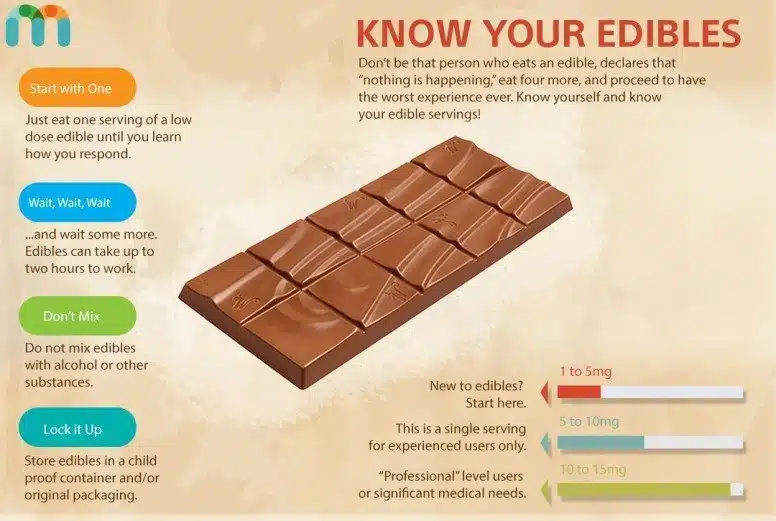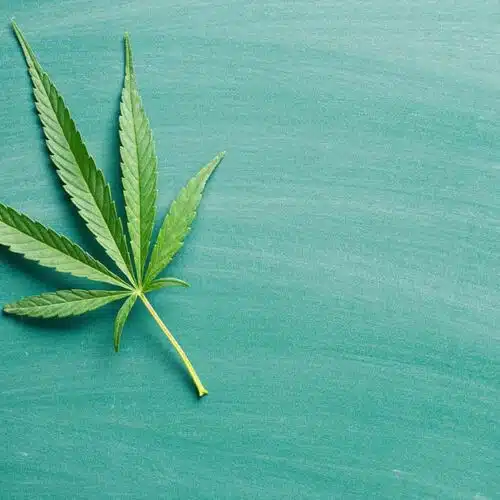New Labeling On Packaging and Edibles in Colorado
Colorado’s new marijuana edible packaging requirements go into effect Saturday, October 8th 2016. The new regulations will require edible marijuana producers to label their products with a diamond-shaped stamp and the letters T-H-C. This is to distinguish the treats from their non-intoxicating counterparts. The stamp will be required not just on the packaging but on the edibles themselves.
The requirement to label marijuana’s psychoactive ingredient, THC, was added after complaints that the edibles looked too much like their non-intoxicating counterparts. It is the first such requirement in any legal cannabis state. The new universal symbol for foods that contain THC is designed to give the edibles a more distinct look, even after they’re out of the packaging.
In Colorado there is already a ban on the use of cartoon characters on marijuana packaging as well as any images deemed to be “attractive to kids”. Starting next year that requirement will be extended to ban any edible marijuana products in the shape of a fruit, animal or human. Colorado also requires the staple “keep out of reach of children” phrase on all marijuana edibles. The stamping requirement also includes: warnings that the product should be kept away from children, the product should not be eaten before driving, while pregnant or nursing, as well as, childproof zippers and lids.
“We want to ensure that people genuinely know the difference between a Duncan Hines brownie and a marijuana brownie, just by looking at it,” – Said state Rep. Jonathan Singer, a Democrat who sponsored the law requiring stamped edibles says.
While candies and baked goods may be moderately easy to stamp, the label requirement is a bit trickier for bulk items such as chips, or marijuana-infused sodas. The state found a solution with new packaging rules specifically for those impossible-to-stamp items, requiring that sodas come in small single-serve bottles, for example.
Accidental Ingestion
Colorado’s marijuana industry was initially hesitant about the change. They pointed out in regulatory meetings the double standard, that alcohol makers aren’t required to dye their drinks or come in single serve bottles to make sure kids don’t get a hold of them.
While that may be true, the ruling still passed. “Some of the industry expectation was, ‘Let’s keep it on the parents and the users in keeping it away from children or people who shouldn’t use it. But you know, sometimes mistakes happen. You turn your back and a product is left out.” Andrew Schrot, chief executive officer of the Denver-based firm, BlueKudu
“It’s really a step in enhancing public safety and making sure that marijuana is out of the hands of children,” said Ron Kammerzell, head of enforcement for the state Marijuana Enforcement Division.
There are no concrete statistics, as of yet, on how many children or adults accidentally ingest cannabis in Colorado. There was a study concluded in 2016 tracing admissions at Children’s Hospital, just outside of Denver in Colorado (just outside Denver). The study found that there was a rise in children being admitted and treated for accidental marijuana ingestion after legalization effects passed. Two years before legalization, the rate of admission for accidental ingestion went from .0012 % of a population of 100,000 to .0022% two years after legalization. Children’s Hospital Colorado reported 81 children treated for accidental marijuana ingestion between 2009 and 2015. It was stated that “Poor child supervision or product storage” was present in about a third of those cases.
The accidental ingestion rates, as small as they were, grabbed lawmakers’ attention. The new regulations were passed more than a year ago, but due to the difficulty of implementing them, there was a year grace period for producers of marijuana edibles.
The New Rules
Marijuana infused product manufacturers must comply with the new universal symbol rules by Oct. 1st. By Dec. 1st, retail stores and medical centers may only sell marijuana marked with the universal symbol. The new rules are as follows, according to the Marijuana Enforcement Division
Retail marijuana specific universal symbol rules:
- All new medical and retail marijuana packaging must feature the new universal symbol on the front. Medical and retail marijuana will have similar, but different symbols.
- Packaging must include the following statement directly below the symbol: “Contains Marijuana. Keep out of the reach of children.”Every single standardized serving (a serving consists of 10 mg of THC) of an edible retail marijuana product must be individually marked, stamped or imprinted with the new universal symbol.
- When impractical to mark an edible retail marijuana product with the universal symbol, as in the case of bulk goods and powders, these products must be packaged in a single serving, child-resistant container.
- In an edible retail marijuana product that contains multiple servings, each single standardized serving must be marked, stamped or imprinted with the universal symbol.
Medical marijuana specific universal symbol rules:
- Edible medical marijuana infused products must be marked, stamped or imprinted with the universal symbol.
- Medical marijuana infused product manufacturers may choose to determine standard portions. Each portion must be marked, stamped or imprinted with the universal symbol.
Other important marijuana packaging rules going into effect Oct. 1:
- The words “candy” or “candies” cannot appear on marijuana or marijuana packaging, unless part of the marijuana establishment’s name.
- Each container of medical and retail marijuana must be labeled with necessary and relevant information for consumers, including a potency statement and a contaminant testing statement. The information must be easily accessible to consumers, clear and noticeable.
- Health and physical benefit claims cannot be included on labels.
Retail sales transaction changes effective Oct. 1:
As a result of House Bill 1261, recreational marijuana stores can sell up to an ounce of retail marijuana and its equivalent in concentrate or other product to residents and non-residents who are 21 years of age and older, according to state revenue department officials. Non-edible and non-psychoactive products, such as ointments and lotions, do not count toward the purchase limit.
- One ounce of retail marijuana flower shall be equivalent to eight grams of retail marijuana concentrate.
- One ounce of retail marijuana flower shall be equivalent to 80 10-milligram servings of THC in retail marijuana product.

